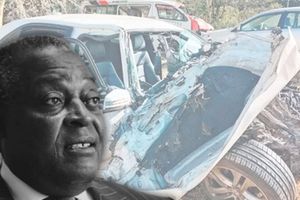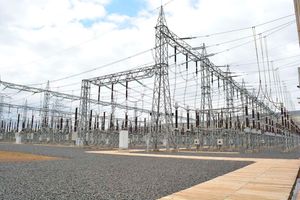Premium
‘Fuliza’ economy: A nation of beggars and swindlers

The number of Kenyans listed as credit defaulters by the CRB is staggering and many find getting out of these shackles of debt difficult.
What you need to know:
- The number of Kenyans listed as credit defaulters by the CRB is staggering and many find getting out of these shackles of debt difficult.
- It costs KSh2,500 to be removed from the blacklist, even if the amount defaulted on was KSh500.
Kenya has never recovered from the tumultuous days of the Covid-19 lockdown, which occasioned great economic and social damage. The pandemic caused massive job losses, the breakup of young families and the accumulation of debt.
No palliative treatment has been preferred to heal it, nor has any serious study been commissioned to explore the mental anguish and damage it brought forth.
The rather comfortable leadership, well-fed and glossy skinned, is oblivious to this truth. For them, everything moves on and the only thing we get are promises, coming at us like an avalanche. We are assured that things will get better, perhaps in two years to come. It is a bitter pill, too bitter for sore Kenyan throats to swallow.
A majority of Kenyans were raised in a largely rural economy, where life was simple and hard work paid. Although salaries were low, parents paid school fees on time, and ensured there were enough supplies at home. Marriages lasted, there was food on the farms and social services and amenities were available. All this changed in the mid-90s, when the Bretton Woods institutions took a bigger role in controlling economies of developing countries.
Social services
The Structural Adjustment Programmes took away most of the social services the government provided and which made life bearable. The latest Central Bank Report on the status of the economy shows that bad loans have hit Sh570 billion. Of these, personal and household loans account for Sh75 billion. Kenyans are borrowing to survive, which signals financial distress.
High inflation – primarily driven by increased food, fuel, electricity and cooking gas prices – alongside a raft of new taxes, are hurting household incomes. During the campaigns last year, the Kenya Kwanza coalition’s Musalia Mudavadi, a former Finance Minister in the 1990s, said a majority of Kenyans were fugitives from Fuliza. Fuliza is a Safaricom service that allows subscribers to complete mobile money transactions even when they don’t have enough funds in their mobile money accounts – a sort of overdraft facility. They “fuliza” about Sh1.6 billion daily to stay afloat.
President William Ruto’s administration started the Hustler Fund and the debt trend has grown even larger on that platform. There are plenty of borrowers but their power to pay is getting weaker by the day. Many defaulters unwillingly keep carrying the loans because they lack the ability to pay in the stipulated time. The number of Kenyans listed as credit defaulters by the CRB is staggering and many find getting out of these shackles of debt difficult. It costs KSh2,500 to be removed from the blacklist, even if the amount defaulted on was KSh500.
We can either pull ourselves out of this hole by learning from the past, or continue digging. President Bill Clinton took the reins when the US was in recession in 1992. He tackled the second highest fiscal deficit in the country since World War II and triggered the turnaround of a scenario akin to Kenya’s today. How did he do it? A tight fiscal stance was implemented simultaneously with an expansionary monetary policy and the US regained prosperity.
Domestic debt
President Mwai Kibaki did the same between 2002 and 2013, and moved GDP growth from 0.5 per cent to 8.4 per cent by 2010, cutting both fiscal spending and borrowing of domestic debt. He combined increased taxation with efficiency of tax administration and reduced public debt from 64.1 per cent of GDP to 38 per cent. Eventually, Kibaki financed about 90 per cent of the budget from Kenya’s own revenues.
Unfortunately, there are many hungry people in the government and we have already sniffed a horrible stench emanating from some procurement deals.
We must beware of the social effects of the crazy rise in the cost of living. Those that have reached the end of their tether are seeking to get out of this cauldron and to look for a life outside Kenya, while those who cannot afford to move are turning to criminal activity. This pressurised container needs an economic vent — now.





